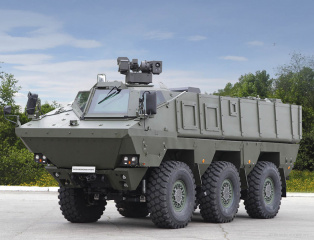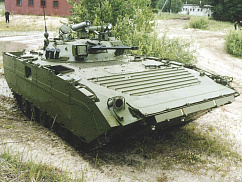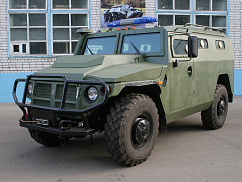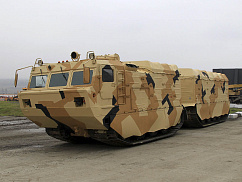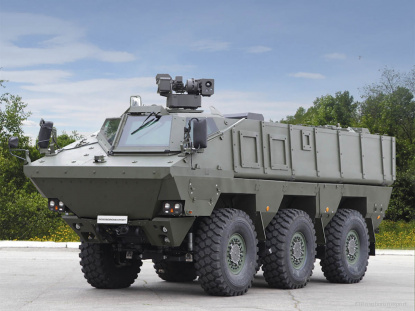
in pdf format
The Typhoon-K motor vehicles are designed to provide integrated logistics support to combined arms and special units, including peacekeeping formations, in various environments. They can be used to carry personnel and military cargos and serve as the basic chassis for mounting a variety of technical systems and weapons.
The vehicles are available in the 6x6 (KAMAZ-63969) and 4x4 (KAMAZ-53949) wheel configurations, have high combat and operational characteristics (mobility, protection, fighting power, design and ergonomics).
The KAMAZ-63969 and KAMAZ-53949 offer high steering capability, speed, off-road performance and maneuverability on all types of roads and terrain.
The Typhoon vehicles are capable of fording 1.50 meters without preparation and climbing a grade up to 30 degrees.
Equipped with 350hp and 450hp diesel engines and automatic transmission systems, they attain a road speed of at least 100 km/h and can travel up to 1,000 km without refueling.
A hydropneumatic suspension system used in all vehicles of the family ensures high ride comfort and effective vibration damping, allowing a change in the suspension stiffness characteristics, ground clearance and body position relative to the road surface, both in automatic and manual override modes. Ground clearance is automatically adjusted depending on vehicle speed, road pavement quality and person-specific driving style.
The Typhoon-K vehicles provide a high level of mine and ballistic protection. Special seats, along with others design features, reduce the negative effects on the crew and troops when a 8 kg TNT explosive device explodes under any wheel and anywhere under the bottom of the vehicle. A high level of ballistic protection is achieved through the use of “sandwich” armor consisting of inner conventional armor steel and new-generation outer ceramic armor.
The Typhoon-K vehicles share the common unitized automobile platform used in the KAMAZ family of tactical protected multipurpose all-wheel-drive medium- and heavy-duty vehicles and feature a high degree of commonality of components and assemblies within the family.
The main differences typical of the new family of tactical protected multipurpose vehicles are as follows:
- enhanced armoring, including mine protection of the chassis bottom against antipersonnel, anti-tank and improvised explosive devices;
- increased power, reliability and fuel efficiency of the diesel engine;
- higher level of safety and comfort for the crew and combat personnel;
- possibility to install a two plane stabilized remote-controlled weapon station;
- on-board information and control system;
- central tire inflation system;
- all-around video surveillance;
- signature reduction package;
- autonomous diesel power unit;
- automatic fire-extinguishing unit.
in pdf format


